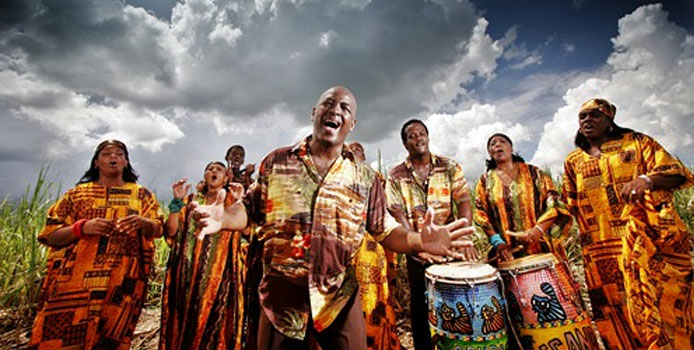I – Cuban Music.

Since its inception, humankind has produced music for all occasions in life. Cuban music has enlivened everyday life with songs and musical instruments that carry the rhythm of work and daily life, constituting the most traditional expression of our people. It has been created by members of different ethnic groups that have been part of our nation’s history.
Cuban music exhibits folkloric components or popular forms of expression, and also showcases so-called cultured music. These components have progressively influenced the musical approach of other cultures. The wealth of Cuban music, primarily in terms of its instrumental color and the powerful opulence of its rhythmic patterns, makes it contagious. It is what identifies us and makes us who we are. Our music is a cultural heritage, a valuable national treasure that distinguishes us socially and culturally as Cubans wherever we are in the world.
Cuban musical tradition, the way of celebrating, singing, and dancing, of making music, is composed of continuous blends, fusions, and transformations. It is a restless, multifaceted tradition, in which the combination and recombination of genres and trends, with the constant rise of melodic, harmonic, rhythmic, and instrumental elements of diverse origins and nature, is always in constant motion.
The richness of Cuban musical creation has been present throughout the ages, embodying our roots, reaching every corner of the archipelago, and crossing borders in all its forms, twists, and nuances.
As Alejo Carpentier stated: “…All of this speaks volumes about the richness of Cuban music, its current diversity, its multiplicity of expressions. Cuban music is a force of our time… But if other genres have aged in less than thirty years, Cuban music continues to spread throughout the world… and far from exhausting its expressions, it is enriched every day with new genres, new modalities, new types of instrumentation and interpretation. This leads us to ask, given the fact of its existence, how was this music born? Where does it come from? How did it acquire its unmistakable character?…”1
June 24, 1966. By Alejo Carpentier. Culture in Cuba and the World. Lectures on Radio Havana, Cuba (1964–1966). Introduction, version, notes, and indexes by Alejandro Cánovas Pérez and José Antonio Baujín. Letras Cubanas, Havana, Cuba, 2001.








